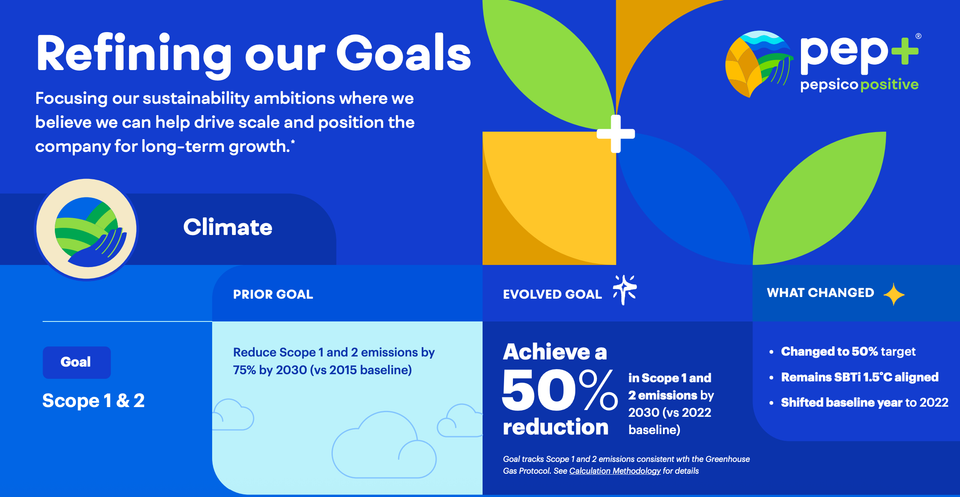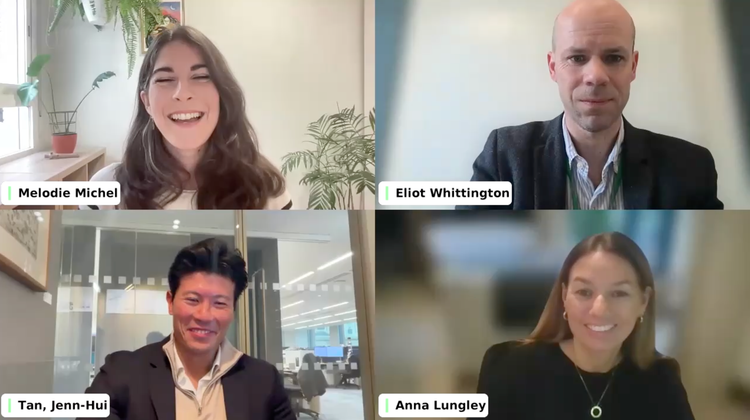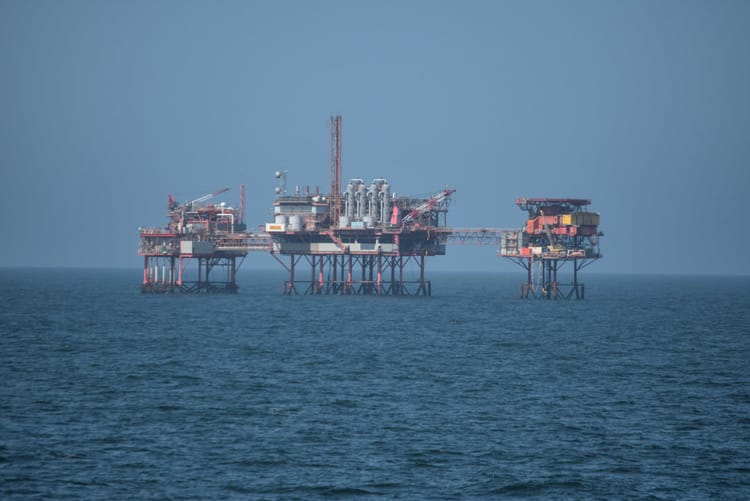PepsiCo adopts transparent approach to climate target adjustment

PepsiCo has made a number of adjustments to its climate targets – including delaying its net zero goal by 10 years and expanding regenerative agriculture ambitions – and is speaking transparently about it.
Like many other companies seeking to advance their climate transition in the midst of economic and political headwinds, PepsiCo is having to adjust its plans. Concretely, the company has moved its net zero target from 2040 to 2050, as well as refining interim targets – splitting Scope 3 emissions goals into separate ‘energy and industrial’ (E&I) and forests, land and agriculture (FLAG) targets.
But while others make these changes quietly, simply dropping words from their sustainability reports or announcing new targets without referring to previous, more ambitious ones, PepsiCo has taken a transparent approach to its climate target adjustment.
The company announced the changes in a press release, accompanied by a document detailing each previous and current target and outlining the amendments in each category.
"We know it's important that we continue to be transparent about our progress – both our successes and the challenges – and the dynamic realities that our company and the broader industry face today," said Jim Andrew, PepsiCo Executive Vice President and Chief Sustainability Officer. "Our sustainability journey will not always be linear, but we are focused on doing the work that can both strengthen our business resilience and support a positive impact for the planet.”
PepsiCo’s regenerative agriculture expansion
On climate change, the company has retired a target to reduce total emissions across all scopes by at least 40% by 2030, establishing specific targets instead.
PepsiCo is now pursuing a 50% reduction in Scope 1 and 2 emissions by 2030, from a 2022 baseline – replacing its previous 2030 goal of 75% reduction from a 2015 baseline. In addition, the firm is seeking a 42% Scope 3 E&I emission reduction and a 30% FLAG emissions reduction in the same timeframe.
At the same time, PepsiCo has increased its regenerative agriculture ambitions, from 7 million acres to 10 million acres used to grow food within its supply chain by 2030. Having met its water efficiency goal in 2023, the company has also retired this target and will now be focusing on watershed health as part of its regenerative agriculture goals.
Complementing this strategy is a target to sustainably source 90% of key ingredients (previously 100%), and a commitment to help overcome “systemic barriers” to sustainable sourcing for the remaining 10%.
Five extra years for deforestation-free supply chains
Similarly, a goal to “realise deforestation-free sourcing in company-owned and -operated activities and global supply chains by 2025” has been softened, with PepsiCo now aiming “continue to strive toward deforestation-free sourcing by 2025” and targeting deforestation and conversion-free sourcing for high-risk commodities by 2030.
Explaining this change, the company highlighted key challenges it has faced in its work to eliminate deforestation from its supply chains so far, including “our ability to trace supply to individual farms, lack of availability of public sector initiatives to incentivise conservation of forests and other natural ecosystems, impediments to identifying areas at high-risk of deforestation and conversion to prioritise action, root causes of deforestation and conversion such as poverty, lack of credibly-certified commodities in certain markets and lack of universally accepted definitions and protocols resulting in varying certifications”.
Accountability and granularity in climate targets: Watch CSO Futures’ briefing with SBTi







Member discussion